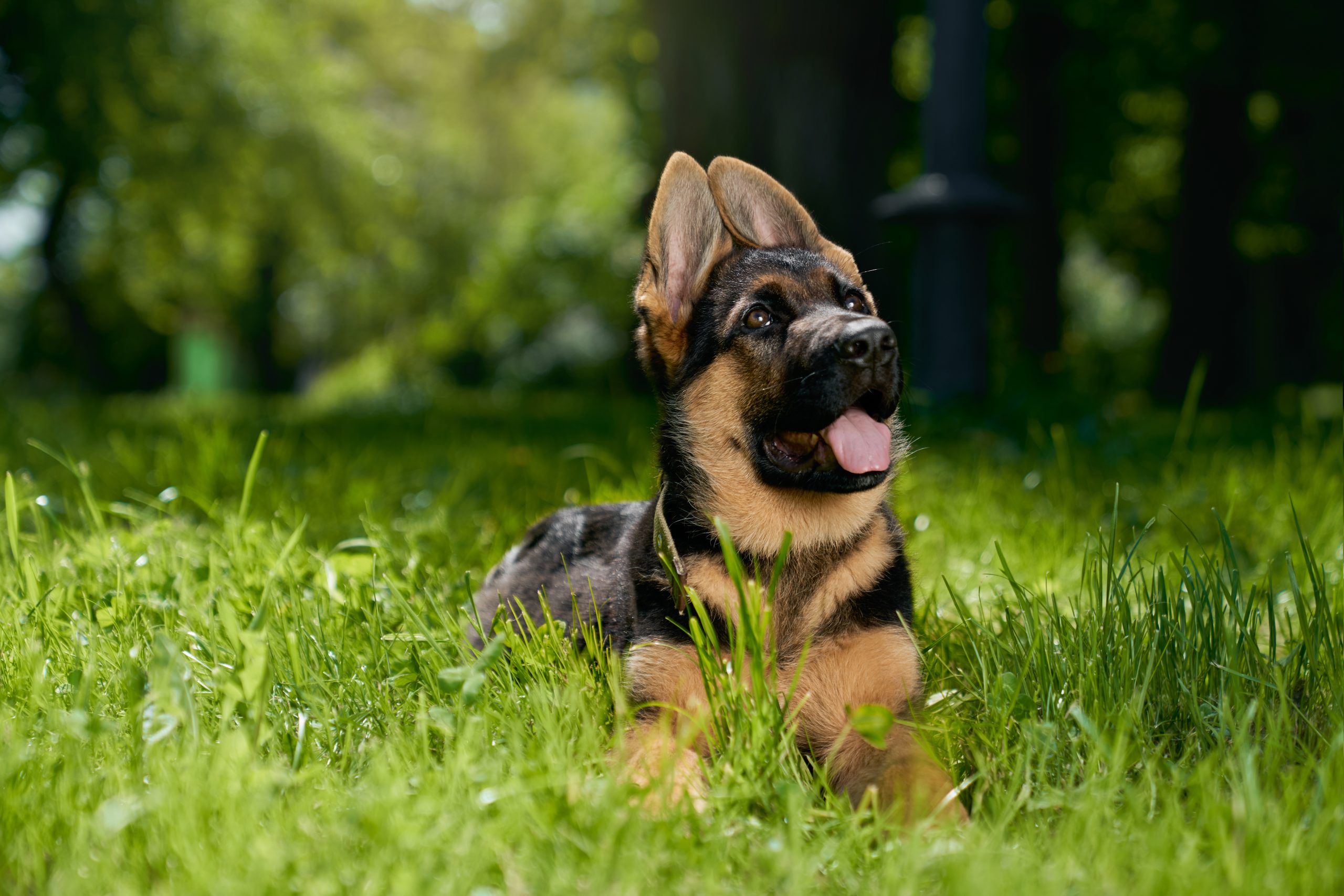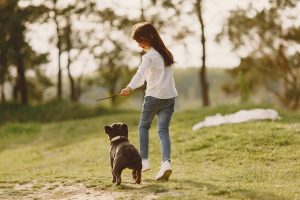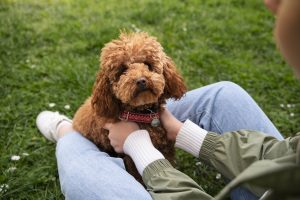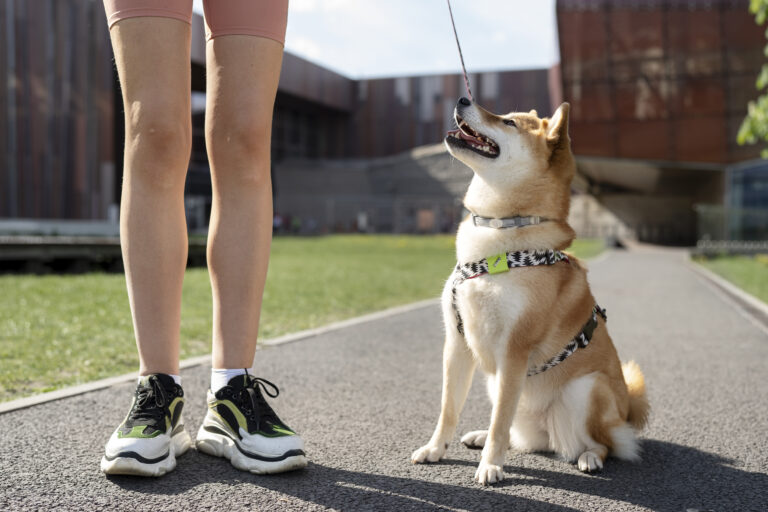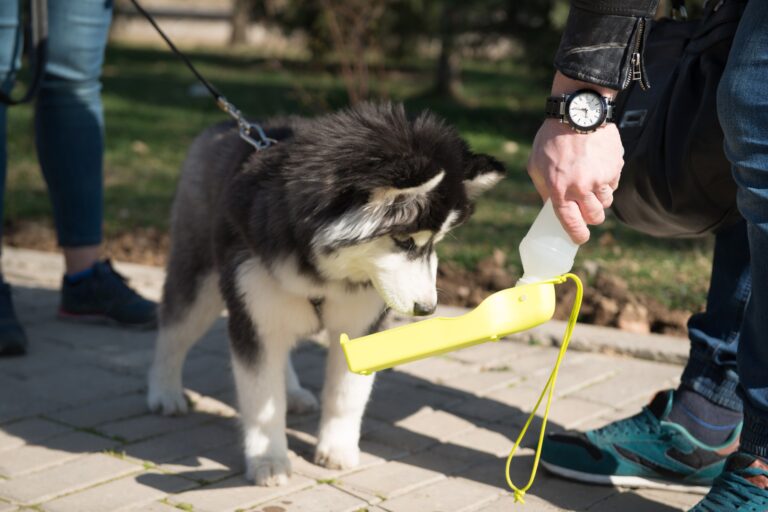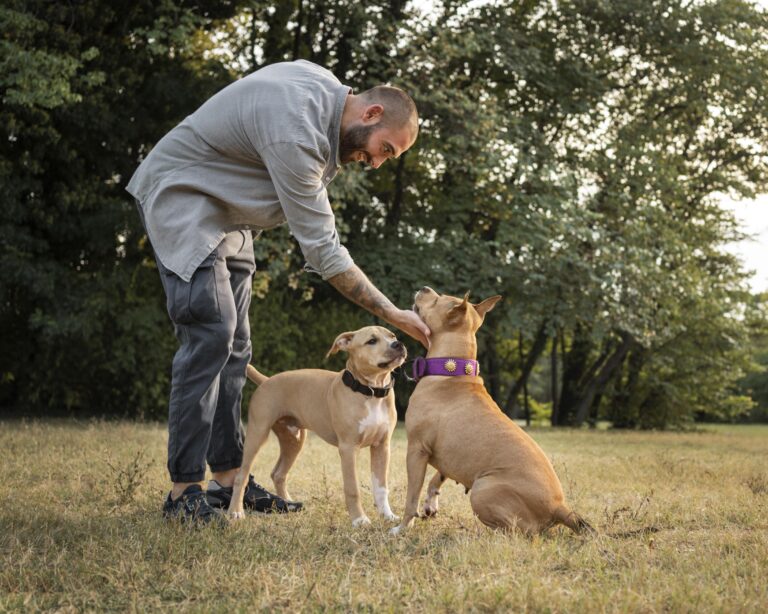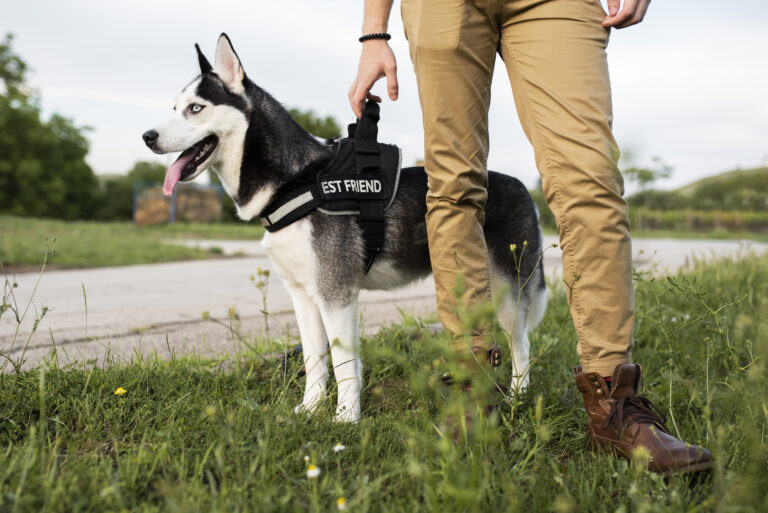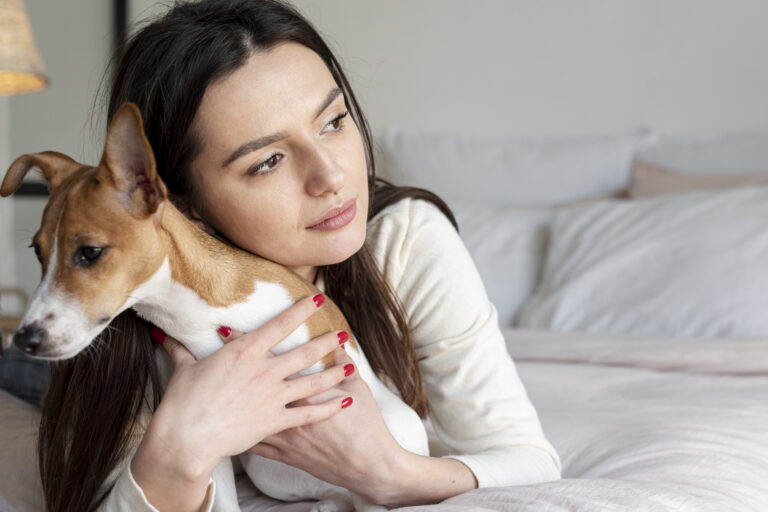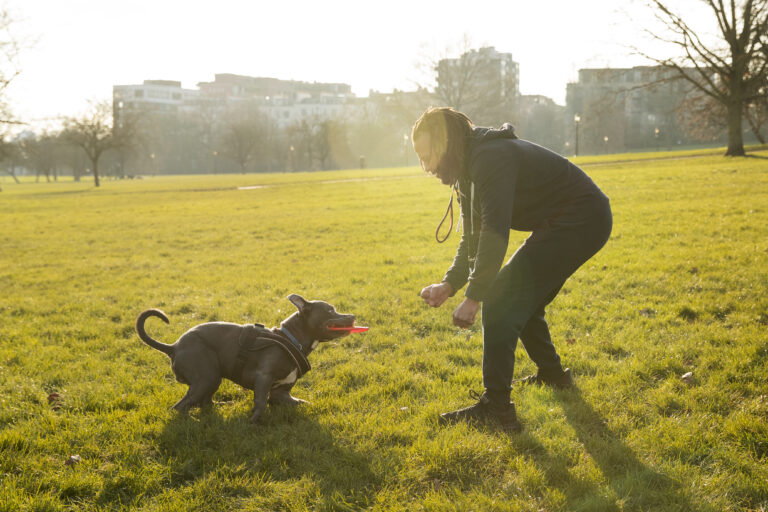Your Puppy’s First 30 Days: Training Goals by Week
Puppy Training Goals by Week are essential for creating a smooth transition into your home and setting the stage for lifelong obedience and good habits. The first 30 days are critical for teaching your puppy foundational skills such as potty training, crate comfort, and basic commands. In this post, we’ll break down what to focus on each week—from building trust to practicing recall—so you and your puppy grow together with confidence and structure.
In these formative weeks, structured training goals are essential. Research indicates that early training significantly enhances a puppy’s sociability and reduces behavioral issues later in life. Week-by-week goals offer a clear roadmap, ensuring your puppy learns basic commands, socialization, and house-training effectively.
The first 30 days with your puppy focus on creating trust, introducing basic commands like “sit” and “stay,” socializing with other pets and environments, and establishing consistent routines for feeding, potty breaks, and playtime. This structured approach ensures a well-adjusted, confident puppy ready for advanced training.
Your Puppy’s First 30 Days: Training Goals by Week
The first week with your puppy is all about creating a safe and loving environment. This is when your puppy adapts to their new home. Make sure they have a cozy bed and plenty of toys. During this period, it’s crucial to establish a feeding schedule. It helps them feel secure and comfortable.
In the second week, start introducing basic commands like “sit” and “stay.” Use positive reinforcement, such as treats and praise, to encourage good behavior. Keep training sessions short, around 5-10 minutes, as puppies have short attention spans. Patience and consistency are key during this stage.
By the third week, it’s time for socialization. Expose your puppy to different people, pets, and environments. This helps them become well-adjusted and reduces anxiety. Consider puppy playdates or visits to the park. A well-socialized puppy will be more confident and friendly.
The fourth week is about reinforcing what your puppy has learned. Stick to the routines you’ve established. Continue practicing commands and introduce new ones if they are ready. Monitor their progress and adjust training techniques as needed. Consistency will ensure long-term success in their development.
Your Complete Puppy Training Guide For The First Month Home!
Week 1: Building Trust and Comfort
The first week with your puppy is crucial for building trust and comfort. Spend a lot of time getting to know your puppy. Gentle interactions and cuddles help form a strong bond. Be sure to create a quiet, safe space for naps. A calm environment helps puppies feel secure.
Consistency in daily routines is important. Feed your puppy at the same times each day. Regular meal times reinforce security. Include potty breaks and playtime in your routine. This predictability reduces anxiety for your new furry friend.
Introduce your puppy to their new surroundings gradually. Walk them around the house to get familiar with different rooms. Show them where their food, water, and bed are located. Gradual exploration prevents overwhelming feelings. A familiar environment increases comfort.
Positive reinforcement encourages trust. Use treats and praise when they exhibit good behavior. Avoid harsh corrections at this stage. Patience and kindness are essential. Building trust now lays the foundation for future training success.
Week 2: Introduction to Basic Commands
During the second week, it’s time to introduce your puppy to basic commands like “sit” and “stay.” Use treats and praise as rewards to motivate them. Puppies respond well to positive reinforcement. Keep training sessions short, around 5 to 10 minutes. This prevents them from becoming overwhelmed or bored.
Start with simple instructions that are easy for your puppy to understand. Demonstrate the action yourself if necessary. For example, gently push their bottom down when teaching “sit.” Always say the command clearly. Repetition helps your puppy grasp the concept.
Gradually increase the difficulty of commands. After mastering “sit,” move on to “stay” and “come.” Make sure to practice these commands in various settings. Different environments help reinforce learning. This exposure builds confidence outside the home.
Consistency and patience are key. Use the same words and gestures every time. Avoid mixing commands, which can confuse your puppy. Celebrate small successes to keep the experience positive. Success now lays the foundation for advanced training later.
Week 3: Socialization and Environmental Exposure
Week three focuses on socialization and exposing your puppy to new environments. This helps them become well-adjusted and reduces anxiety. Introduce your puppy to a variety of people, both adults and children. Positive interactions with others will build their confidence. Always supervise these encounters to ensure safety.
Take your puppy on short trips outside the home. Walks around the neighborhood or visits to the park are great opportunities. Exposing them to different sights, sounds, and smells builds resilience. Gradually increase the length of these outings. This helps them adapt to new situations without feeling overwhelmed.
Meeting other dogs is also important during this stage. Arrange playdates with known, friendly dogs. This teaches your puppy how to interact with other canines. Monitor these play sessions closely to prevent any aggressive behavior. A socialized puppy is less likely to develop fear or aggression later.
Consistent exposure to various environments aids in their development. Take them to different rooms within your house. Introduce them to household noises like vacuum cleaners and doorbells. These experiences reduce the chances of phobias. Consistency and gradual exposure are key.
Use positive reinforcement during socialization activities. Reward good behavior with treats and praise. This reinforces their confidence and willingness to explore. Avoid forcing your puppy into situations they’re uncomfortable with. Allow them to approach new experiences at their own pace.
Creating positive experiences during these early stages has long-term benefits. A well-socialized puppy is more adaptable and less stressed. Frequent interactions in various settings ensure a happy and confident adult dog. These weeks are pivotal in their growth and development.
Week 4: Reinforcement and Routine Establishment
Week four is all about reinforcing learned behaviors and establishing routines. Consistency is key to solidify commands like “sit” and “stay.” Practice these commands daily to reinforce understanding. Make training sessions a regular part of your puppy’s day. Routine helps cement these behaviors in their minds.
Continue with socialization activities, ensuring they adapt to different environments. Gradually increase the complexity of commands. Introduce commands like “drop it” and “leave it” for more advanced learning. Mixing in new commands keeps training engaging. A diverse set of skills is beneficial.
A structured feeding schedule aids in routine establishment. Feed your puppy at the same times each day. Regular mealtimes contribute to a sense of security. Include playtime and rest periods in the daily routine. Balanced schedules promote healthy development.
Monitor your puppy’s progress and adjust training techniques as needed. Keep track of their responses to different commands. Consistency remains crucial. If certain behaviors require more attention, dedicate extra practice time. Tailoring training to their needs ensures effective learning.
Positive reinforcement continues to be important. Use treats and praise generously when commands are followed. Avoid negative reinforcement which can create fear. Rewarding good behavior fosters a positive learning environment. This makes training enjoyable for both of you.
Establishing routines now sets the stage for a well-behaved adult dog. Regular practice and consistency are the pillars of successful training. A well-structured routine contributes to a happy, confident pup. These habits formed during week four pave the way for lifelong learning.
Key Techniques for Effective Puppy Training
Effective puppy training relies on several key techniques. Positive reinforcement is one of the most important methods. Reward your puppy with treats and praise for good behavior. This encourages them to repeat desirable actions. Consistent rewards lead to faster learning.
Another crucial technique is consistent commands. Always use the same words and gestures for each command. This helps your puppy understand what is expected. Mixed signals can confuse them. Clarity in commands results in successful training.
Short and frequent training sessions are ideal. Puppies have short attention spans and can get easily distracted. Keep each session to around 10 minutes. Frequent practice reinforces learning. Short bursts keep training effective and enjoyable.
Socialization is also a key element. Introduce your puppy to various environments and experiences. This includes meeting new people and animals. Positive social interactions build confidence. A well-socialized puppy adapts better to changes.
Implementing structured routines benefits training. Establish regular feeding, potty breaks, and playtime schedules. Predictability helps puppies feel secure. Routine reinforces learned behaviors. A structured environment supports their development.
Continuous monitoring and adjustment are essential. Observe how your puppy responds to training techniques. If needed, tweak your approach for better outcomes. Each puppy is unique, so personalize the training. Tailored techniques ensure effective learning and growth.
The Role of Play in Early Canine Education
Play is a crucial aspect of early canine education. It helps puppies develop essential social skills. Through play, they learn how to interact with other dogs. They also figure out boundaries and acceptable behavior. Social play encourages healthy development.
Engaging in various types of play can enhance your puppy’s physical and mental abilities. Tug-of-war strengthens their muscles and coordination. Puzzle toys stimulate their minds and boost problem-solving skills. Fetch promotes agility and response time. These activities contribute to well-rounded growth.
Structured playtimes are an excellent way to reinforce training commands. Integrate commands like “sit” or “stay” into their favorite games. This makes learning fun and engaging for your puppy. They’re more likely to remember commands through playful practice. The combination of fun and training accelerates learning.
Interactive play between you and your puppy builds stronger bonds. Spend quality time playing together each day. This fosters trust and deepens your relationship with them. Strong bonds become the foundation for successful training later on.
Ensure a variety of toys are available during play sessions. Different toys can cater to different needs, such as teething or boredom alleviation.
Chew toys for teething relief
Puzzle toys for mental stimulation
Fetch toys for enhanced coordination
Variety keeps your puppy interested and engaged.
Safe, supervised play prevents accidents or undesirable behaviors from developing. Monitor all play sessions closely. Immediately address any signs of aggression or bad habits. Supervised interactions ensure positive experiences. This proactive approach aids in healthy development.
Monitoring Your Puppy’s Progress and Adjustments
Monitoring your puppy’s progress is essential during the first 30 days. Keep track of how well they are learning commands and adjusting to their new environment. Note any behaviors that need more work. Progress tracking helps tailor training to their needs. It ensures they are developing at a healthy pace.
Use a journal or a digital app to record their milestones. Mark when they successfully learn a new command. Track how they respond to socialization efforts. This documentation can reveal patterns. Awareness of these patterns aids in adjusting training techniques.
Regular vet visits are crucial for monitoring your puppy’s health. Ensure they are gaining weight appropriately and developing as expected. Discuss any behavioral concerns with your vet. They can offer tailored advice. Your veterinarian’s input is valuable in making necessary adjustments.
Incorporate check-ins during training sessions. Assess your puppy’s response to different commands and environments. Are they confident with “sit” but struggling with “stay”? Use this information to focus your efforts. Concentrate on areas that need improvement.
Adaptability is key when training your puppy. Be ready to change methods if something isn’t working. Flexibility ensures that training remains effective. Every puppy is unique and might require different approaches. Customized training plans yield the best results.
Monitoring progress ensures your puppy receives the best start. By adjusting techniques based on their needs, you set them up for long-term success. Regular assessments and tailored training lead to a well-behaved and happy dog. This proactive approach makes the training journey smoother for both of you.
Tips for Maintaining Consistency in Training
Consistency is essential for effective puppy training. Establish a regular schedule for training sessions. This helps your puppy understand what to expect. Consistency provides structure, making learning easier. A predictable routine builds trust and confidence.
Use the same commands and gestures every time. Changing words or signals can confuse your puppy. Stick to one word for each action, like “sit” or “stay.” Consistency in language helps them learn faster. Clear communication is key to successful training.
Implement short, frequent training sessions. Puppies have short attention spans. Keep sessions between 5-10 minutes. Frequent practice solidifies learning. Short, focused training avoids frustration for both of you.
Involve all household members in the training process. Everyone should use the same commands and rewards. Consistent behavior from all family members is crucial. Mixed signals can hinder progress. Unified efforts make training more effective.
Track your puppy’s progress to maintain consistency. Use a journal or an app to record their training achievements. Note which commands they master and which need more work. This helps in planning future sessions. Monitoring ensures a structured approach.
Utilize positive reinforcement consistently. Reward good behavior immediately with treats or praise. This reinforces the behavior you want to encourage. Avoid negative reinforcement which can create fear. Positive, consistent rewards make learning enjoyable for your puppy.

Frequently Asked Questions
Puppy training can feel overwhelming, especially during the first 30 days. Here are answers to common questions that will help guide you through this crucial period.
1. How do I ensure my puppy is comfortable in its new home?
Start by creating a safe and quiet space for your puppy. This area should include a cozy bed and some toys to make them feel secure. Spend time with your puppy in this area to help them feel more at ease.
A consistent routine is also important. Feed, play, and take them for potty breaks at the same times each day. This predictability helps your puppy feel secure and comfortable in their new surroundings.
2. What is the best way to introduce basic commands?
Introduce commands like “sit” and “stay” using positive reinforcement, such as treats and praise. Keep training sessions short—about 5 to 10 minutes each—since puppies have short attention spans.
Be consistent in your commands and gestures to avoid confusing your puppy. Start with simple commands and gradually increase the complexity as they master each one. Patience and repetition are key.
3. How important is socialization for my puppy?
Socialization is very important for puppies. It helps them become well-adjusted and reduces the risk of anxiety or aggression. Introduce your puppy to various people, pets, and environments gradually and under supervision.
Positive experiences during socialization are crucial. They build your puppy’s confidence and help them adapt to new situations. This can lead to a happier and more friendly adult dog.
4. Which techniques can improve training effectiveness?
Using consistent commands and positive reinforcement, such as treats and praise, can greatly improve training effectiveness. Short, frequent training sessions are ideal, as they help maintain your puppy’s focus and interest.
Structured routines also benefit training. Regular feeding, potty breaks, and playtimes contribute to a predictable environment that supports learning. Tracking your puppy’s progress can help identify areas needing additional focus.
5. How do I handle setbacks or slow progress in training?
If your puppy seems to be struggling with training, it’s important to remain patient and calm. Adjust your training methods if necessary, and make sure you are consistent with commands and reinforcement.
Don’t be afraid to seek professional advice if needed. A vet or professional trainer can offer tips and strategies tailored to your puppy’s unique needs. Remember, each puppy learns at their own pace.
Your New Puppy’s First Day: Essential Guide to a Smooth Transition
Conclusion
The first 30 days with your new puppy are foundational. Establishing trust, introducing basic commands, and ensuring proper socialization set the stage for a well-behaved dog. Consistent routines and positive reinforcement make learning enjoyable for your puppy.
Monitoring progress and making necessary adjustments ensures effective training. Remember, patience and consistency are key. With these strategies, you can look forward to a happy and confident furry companion.

